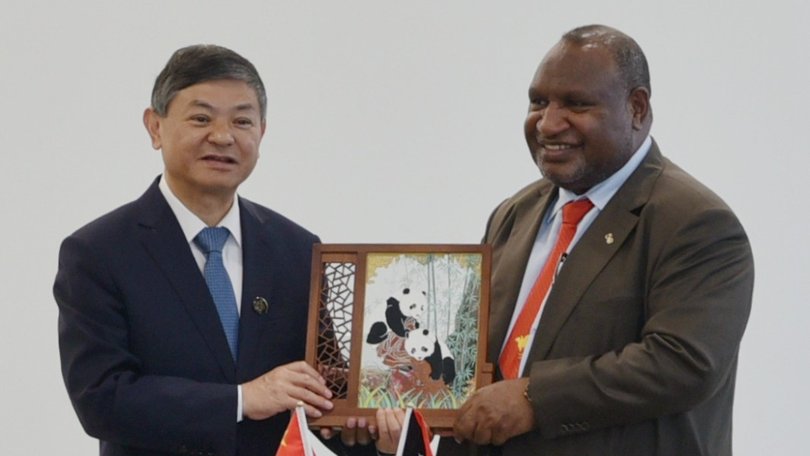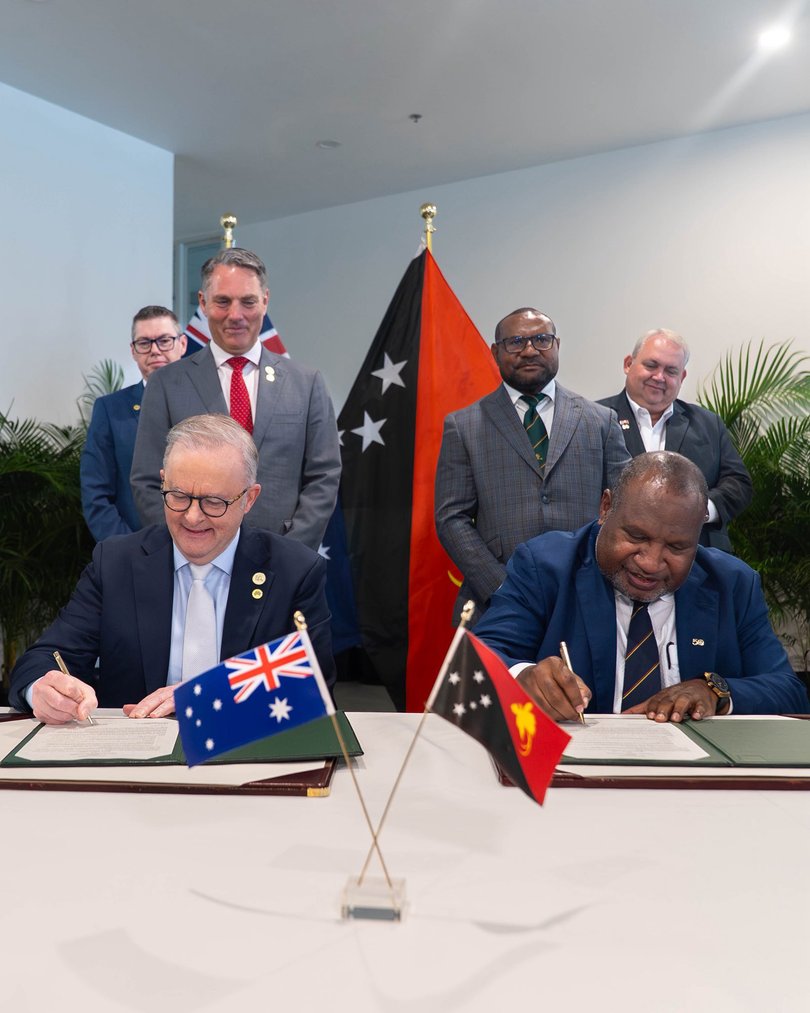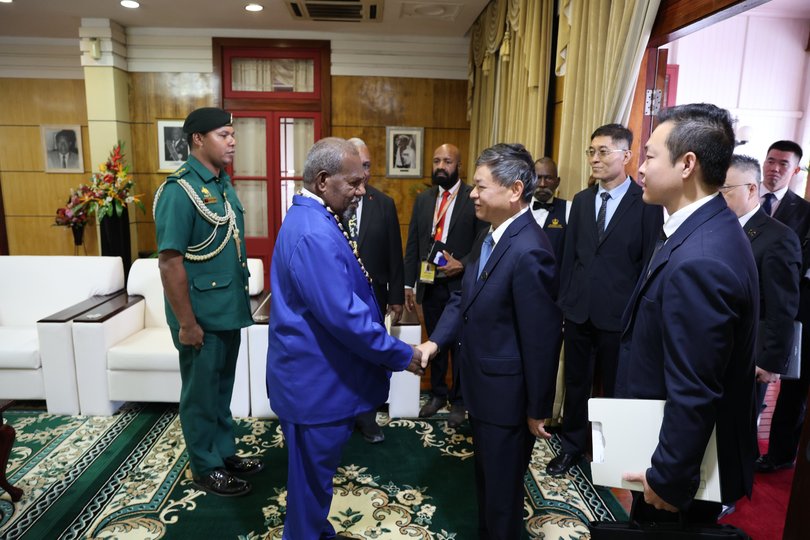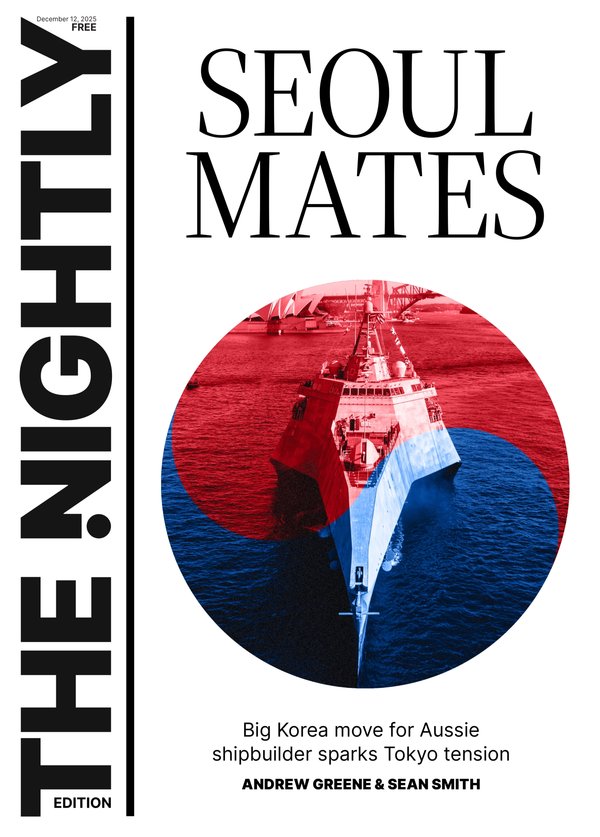PNG treaty: China questions loom after Anthony Albanese’s failure to lock in pact with island nation

Papua New Guinea’s Prime Minister has assured Beijing his country placed “great importance” on relations with China, just before his cabinet delayed giving approval to an historic defence alliance with Australia.
Australian Prime Minister Anthony Albanese had expected to sign the long-awaited mutual defence treaty during this week’s visit to Port Moresby where he joined official celebrations for the 50th anniversary of PNG’s independence.
However, it has now emerged that just two days ago PNG Prime Minister James Marape met with a visiting special envoy of China’s President Xi Jinping, where both sides are said to have had “fruitful exchanges on bilateral relations and practical cooperation”.
Sign up to The Nightly's newsletters.
Get the first look at the digital newspaper, curated daily stories and breaking headlines delivered to your inbox.
By continuing you agree to our Terms and Privacy Policy.On Wednesday Mr Marape insisted Beijing was not to blame for his government’s delay in approving the long-awaited mutual defence treaty with Australia which aims to elevate relations to an ANZUS alliance level.
At the end of his own three-day visit to Port Moresby, Mr Albanese instead joined Mr Marape to sign a hastily drafted communique outlining the principles of the defence treaty, which also prevents China striking a similar deal.
“The text of this treaty has been agreed, and it will be signed following cabinet processes in both countries,” Mr Albanese said, while noting he expected it would be signed in the “coming weeks”.
“It contains a mutual defence commitment under which both countries recognise that both Australia and PNG have a mutual interest in our security. It also will be a reflection of our shared commitment to regional security, our shared values and the depth of our partnership.

“This treaty will elevate our relationship to the status of an alliance. It will be Australia’s first new alliance in more than 70 years,” Mr Albanese added.
On Tuesday it emerged PNG’s government had failed to endorse the document at a cabinet meeting because several ministers were instead attending 50th anniversary celebrations around the country.
Asked whether the setback was embarrassing given that it came just a week after Vanuatu delayed signing a similar deal with Australia, Mr Albanese insisted it was important his government respected the democratic processes of other nations.
“Democracies aren’t the same as authoritarian regimes. They go through processes. We respect them… Processes are important, and sovereignty is important, and we respect it, and Papua New Guinea will go through its Cabinet processes”.
PNG’s Prime Minister also rejected suggestions that pressure from China on members of his Cabinet played a role in delaying formal approval of the sweeping Pukpuk Treaty, despite the fact Mr Marape held talks with China’s visiting special envoy earlier this week.
“A security treaty for Papua New Guinea will be the highest in terms of security relations we’ve given to any country. Just last year, we signed a defence cooperation agreement with Australia,” Mr Marape said.
“We’ve maintained the one China Policy but China also knows, clearly, that in as far as security we have our security partners of choice and so this is in no way a sacred bond.”
However China’s embassy in Papua New Guinea this week published pictures of Chinese President Xi Jinping’s special envoy Huang Runqiu paying a courtesy call to Mr Marape on Monday, the same day Mr Albanese arrived in Port Moresby.
“The two sides had fruitful exchanges on bilateral relations and practical cooperation,” the Chinese embassy said in a statement posted on social media.
“Prime Minister Marape emphasised that the PNG Government attaches great importance to PNG-China relations and firmly adheres to the one-China policy.”
Shadow Defence Minister Angus Taylor described Australia’s defence treaty setback as an “embarrassing policy failure” so soon after the failure to secure an agreement in Vanuatu and accused the government of being “better at rhetoric than reality”.
“It is also clear the Chinese Communist Party is seeking to increase its influence throughout the South Pacific, and we need to be able to balance and counter that,” Mr Taylor said.

Speaking after returning to Australia from Papua New Guinea, Pacific Islands Minister Pat Conroy denied the government had bungled the process and insisted it was simply a “logistical delay”.
“The Cabinet of PNG was scheduled to consider the treaty on Monday - unfortunately most of their ministers had left Port Moresby to go to their home provinces to celebrate Independence Day and that meant they did not have a quorum to consider the treaty.”
